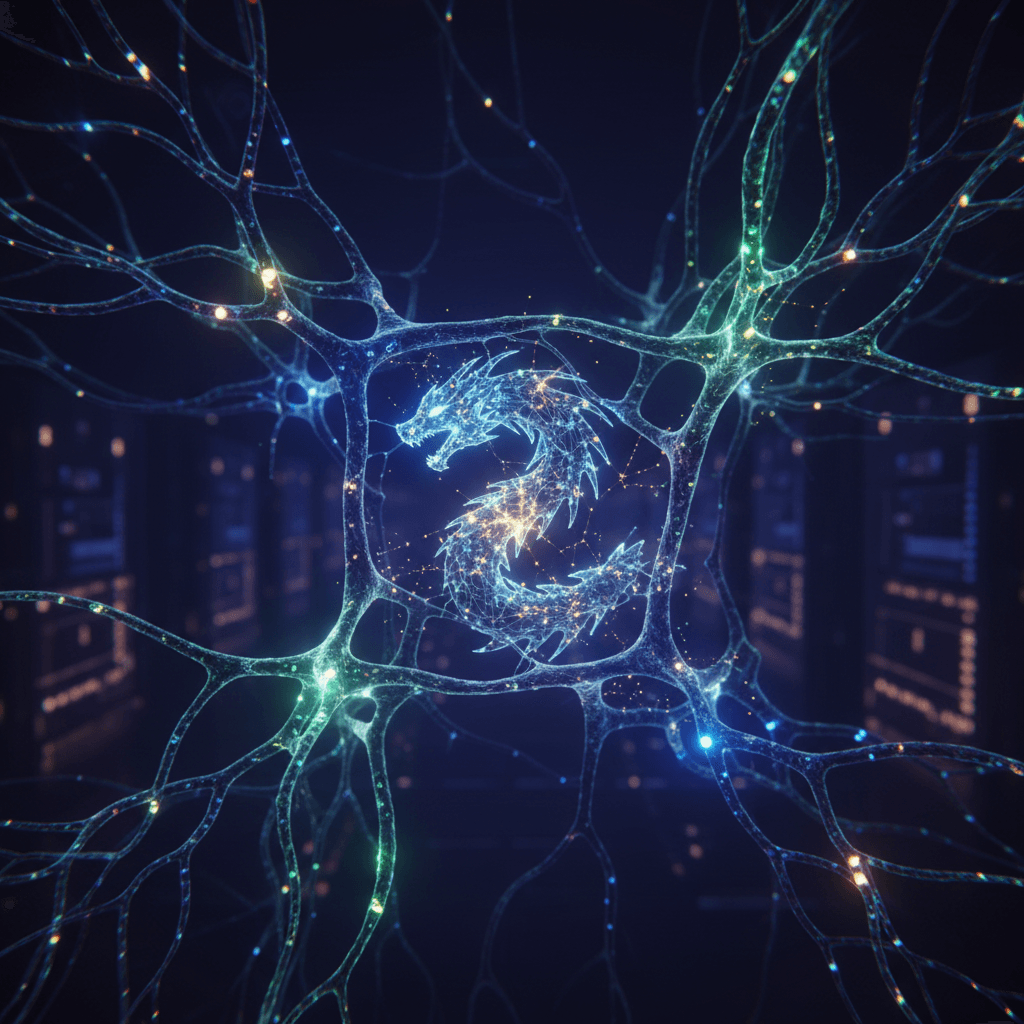Brain-Inspired Dragon Hatchling AI Redefines Learning, Challenges Transformer Dominance
Pioneering brain-inspired AI, a Polish-American startup challenges transformers with a new architecture for continuous learning and transparency.
October 18, 2025

A Polish-American start-up, Pathway, is pioneering a new direction in artificial intelligence with a language model architecture that departs from the prevailing transformer-based systems and instead draws its inspiration directly from the intricate neural structures of the human brain.[1] This novel design, named "(Baby) Dragon Hatchling" (BDH), moves away from the dense, layered computations of models like GPT-3 and its successors, opting for a dynamic and biologically plausible network of artificial neurons and synapses.[2] The venture, led by a team of prominent Polish scientists, aims to address some of the most significant challenges in modern AI, including the difficulties in continuous learning, the lack of interpretability, and the immense computational resources required by current large language models.[3]
At the core of the BDH architecture is a move away from the rigid, pre-defined structures of transformer models towards a more fluid and organic network.[2] This network is described as a "scale-free, locally interacting network of neurons" capable of intrinsic reasoning dynamics.[4] A key principle underpinning this design is Hebbian learning, a concept from neuroscience often summarized as "neurons that fire together, wire together."[1][5] In the BDH model, this means that the strength of the connection, or synapse, between two artificial neurons increases when they are activated simultaneously.[1] This approach allows for a more distributed and dynamic form of memory, where information is encoded in the strength of these connections rather than in fixed mathematical structures.[1] This method of learning is unsupervised, meaning the network can learn patterns and extract features from data without explicit instructions, which is thought to be more akin to how biological brains learn.[6][7]
One of the most significant departures from the transformer architecture is BDH's use of sparse, positive activations. In a traditional large language model, a large percentage of neurons are active at any given time to process information. In contrast, BDH's design means that only a small fraction of its "neurons" are active at any one time, a characteristic that mirrors the energy efficiency of the human brain.[2] This sparsity not only has the potential to drastically reduce the computational power and energy required to run these models but also greatly enhances their interpretability. Researchers at Pathway have observed that specific synapses in the BDH model become associated with particular concepts, a property they term "monosemanticity."[4][3] For instance, certain connections would activate almost exclusively when processing text related to currencies or geographical locations, and this behavior was even observed across different languages.[1] This emergent modularity, where the network self-organizes into specialized communities of neurons, provides a clearer window into the model's reasoning process, a stark contrast to the "black box" nature of many contemporary AI systems.[2][1]
A major focus of Pathway's research with the BDH architecture is to overcome the challenge of "generalization over time," a critical hurdle for the advancement of autonomous AI.[8][9] Current large language models are typically trained on a static dataset and then deployed; they do not continuously learn from new information or experiences in a seamless way.[3] Pathway's design, with its dynamic synaptic plasticity, aims to create a system that can adapt and evolve its knowledge base in real-time as it processes new data.[9][3] This capability for lifelong learning is a fundamental aspect of human intelligence that has so far been difficult to replicate in artificial systems. Furthermore, the BDH architecture does not have the same inherent limitations on context length that transformer models do, which are constrained by a fixed "context window."[10][2] In principle, this allows the BDH model to maintain and draw upon a much longer history of information, a crucial element for complex, multi-step reasoning.
In terms of performance, the "(Baby) Dragon Hatchling" has demonstrated promising results. In head-to-head comparisons with transformer models of equivalent parameter sizes, ranging from 10 million to 1 billion, BDH has been shown to match the performance of GPT-2 on language and translation tasks.[4][1] Notably, the researchers at Pathway reported that BDH exhibited a faster learning rate per token of data and achieved a better reduction in loss, particularly in translation tasks.[1] While GPT-2 is an older model, its architecture was foundational to the development of today's more powerful language models, making this a significant benchmark. The team at Pathway, which includes prominent figures such as co-founder and CSO Adrian Kosowski, has made the code for BDH publicly available, fostering further research and development in this area.[4][8][11] The project has also attracted the backing of notable figures in the AI community, including Lukasz Kaiser, a co-inventor of the original Transformer architecture.[11][12]
The development of brain-inspired architectures like Pathway's BDH signals a potential paradigm shift in the field of artificial intelligence. By moving beyond the brute-force scaling of existing models and instead focusing on the fundamental principles of neural computation, researchers hope to create AI systems that are not only more powerful and efficient but also more transparent, adaptable, and ultimately, more aligned with human-like reasoning. While the technology is still in its early stages, the "Dragon Hatchling" represents a significant step towards a new generation of artificial intelligence that learns and thinks in a manner that is fundamentally closer to our own. This approach could have profound implications for the future of AI, potentially leading to more robust, reliable, and safer artificial general intelligence.
Sources
[2]
[3]
[4]
[5]
[7]
[9]
[10]
[11]
[12]